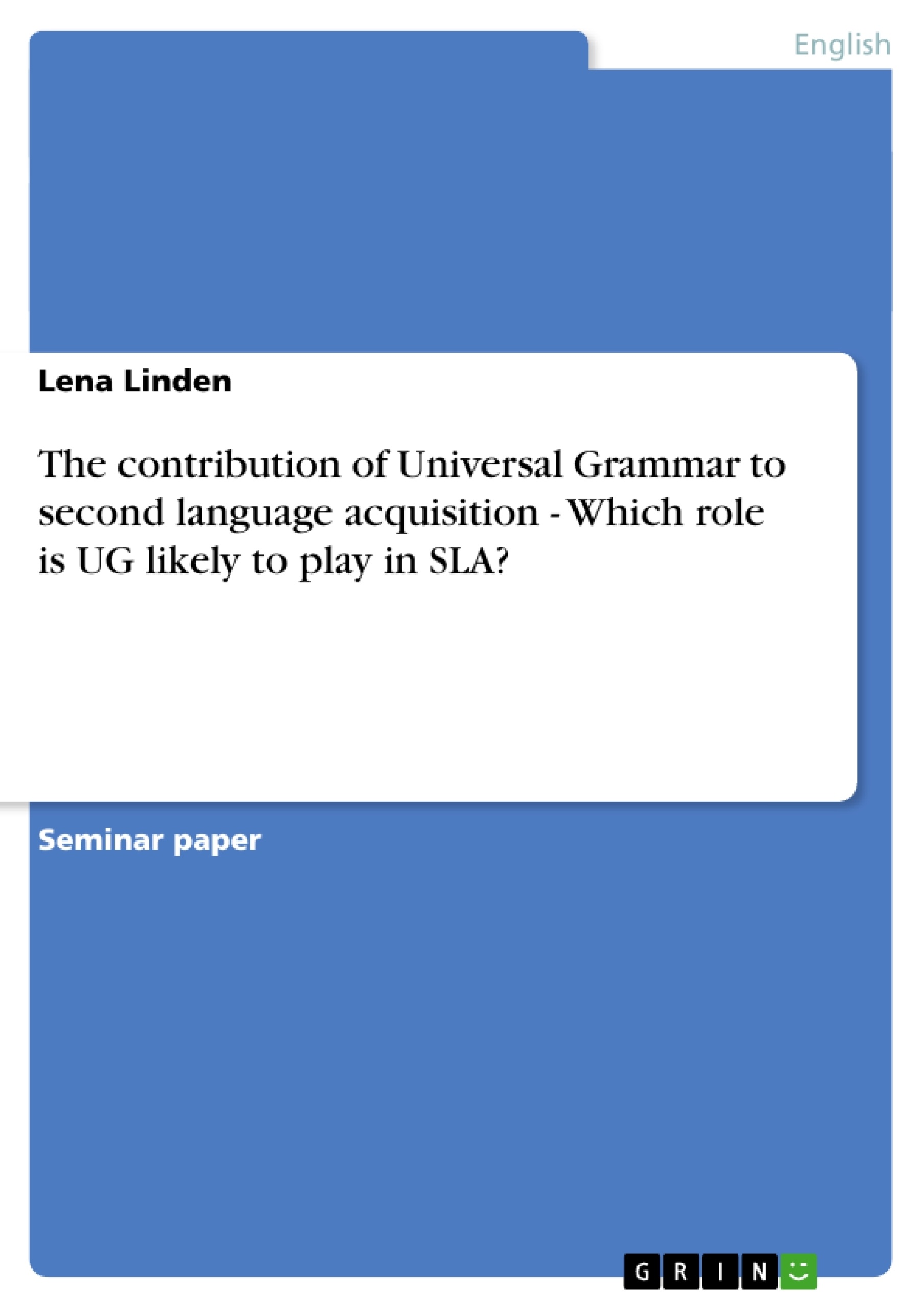If we take for granted that children acquire their first language with the help of an innate language acquisition device containing Universal Grammar, is it likely that the acquisition of a second language works in the same way? Is Universal Grammar still the driving force or did the prerequisites for the acquisition change in a way that learners need to consult other means and resources, like only their general cognitive abilities and learning strategies?
There are many points in which first and second language acquisition differ...It is these differences that made linguists doubt that first and second language acquisition are entirely the same process.
This paper is concerned with the question whether Universal Grammar is still available for second language learners and whether the mental grammar of L2 learners shows signs of impairment. After a short introduction to the concept of Universal Grammar in first language acquisition, it will turn to Universal Grammar in second language acquisition. In this context it will be considered whether the interlanguage grammar might be impaired and whether UG is probable to influence second language acquisition. Several theories of second language acquisition will be presented in advance to the discussion whether learners are likely to have full access, partial access or no access to Universal Grammar. Before being concluded it will take a short look at the problems that arise in second language research.
Table of Contents
- The Contribution of Universal Grammar to Second Language Acquisition
- Which Role is UG likely to play in SLA?
- First language acquisition and Universal Grammar
- Second language acquisition and Universal Grammar
- Impairment of the L2 representation
- Is UG accessible in second language acquisition?
- Basic alternatives of UG accessibility
- Full access theories
- Partial and indirect access theories
- No access theories
- Discussion
- Problems with the studies
- Conclusion
- References
Objectives and Key Themes
This paper examines the potential role of Universal Grammar (UG) in second language acquisition (SLA). The paper explores whether the mental grammar of L2 learners is impaired and if UG is accessible during the acquisition process. Different theories of SLA are analyzed, focusing on the varying levels of UG access proposed.
- The influence of first language knowledge on second language acquisition.
- The role of Universal Grammar in both first and second language acquisition.
- The potential impairment of the L2 representation.
- The accessibility of Universal Grammar in second language acquisition.
- Different theories of SLA and their perspectives on UG access.
Chapter Summaries
- The paper begins by discussing the role of Universal Grammar in first language acquisition, highlighting its ability to account for the rapid and systematic development of language in children. It explains Chomsky's theories of "Government and Binding" and the "Minimalist Programme", emphasizing how Universal Grammar provides an innate language acquisition device that helps children learn their native language.
- This chapter delves into the question of whether Universal Grammar is still available for second language learners. It examines the potential impairment of the L2 representation and explores the different theories regarding the accessibility of UG in SLA.
Keywords
Universal Grammar, second language acquisition, L2 representation, impairment, accessibility, full access theories, partial access theories, no access theories, first language acquisition, interlanguage grammar, mental grammar, cognitive development, critical period, input, feedback, speed of acquisition, ultimate attainment.
- Quote paper
- Lena Linden (Author), 2006, The contribution of Universal Grammar to second language acquisition - Which role is UG likely to play in SLA?, Munich, GRIN Verlag, https://www.grin.com/document/83851




